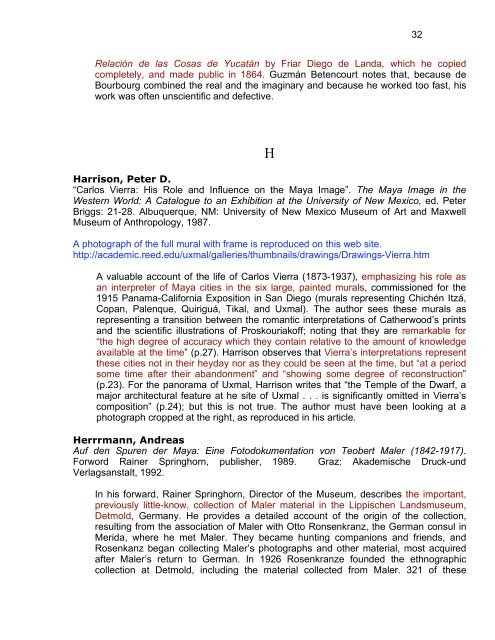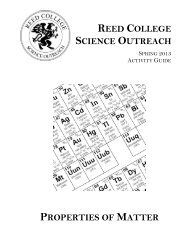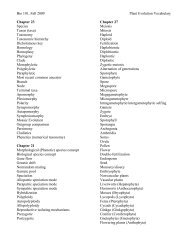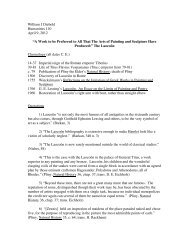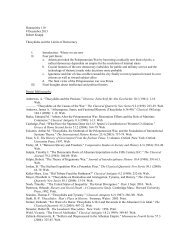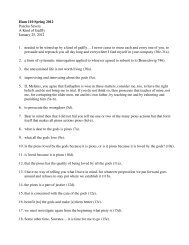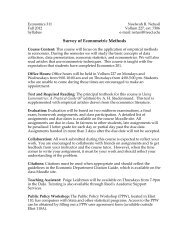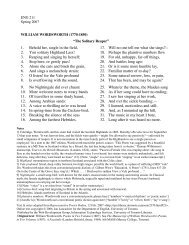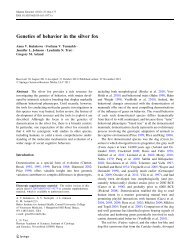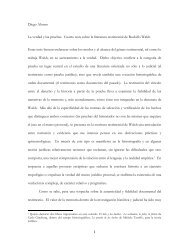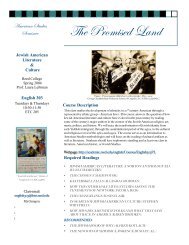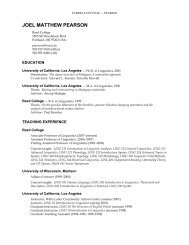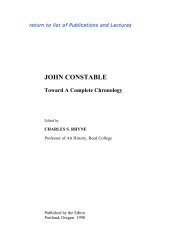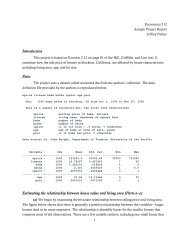Graphic and Photographic Documentation - Reed College
Graphic and Photographic Documentation - Reed College
Graphic and Photographic Documentation - Reed College
You also want an ePaper? Increase the reach of your titles
YUMPU automatically turns print PDFs into web optimized ePapers that Google loves.
Relación de las Cosas de Yucatán by Friar Diego de L<strong>and</strong>a, which he copied<br />
completely, <strong>and</strong> made public in 1864. Guzmán Betencourt notes that, because de<br />
Bourbourg combined the real <strong>and</strong> the imaginary <strong>and</strong> because he worked too fast, his<br />
work was often unscientific <strong>and</strong> defective.<br />
H<br />
Harrison, Peter D.<br />
“Carlos Vierra: His Role <strong>and</strong> Influence on the Maya Image”. The Maya Image in the<br />
Western World: A Catalogue to an Exhibition at the University of New Mexico, ed. Peter<br />
Briggs: 21-28. Albuquerque, NM: University of New Mexico Museum of Art <strong>and</strong> Maxwell<br />
Museum of Anthropology, 1987.<br />
A photograph of the full mural with frame is reproduced on this web site.<br />
http://academic.reed.edu/uxmal/galleries/thumbnails/drawings/Drawings-Vierra.htm<br />
A valuable account of the life of Carlos Vierra (1873-1937), emphasizing his role as<br />
an interpreter of Maya cities in the six large, painted murals, commissioned for the<br />
1915 Panama-California Exposition in San Diego (murals representing Chichén Itzá,<br />
Copan, Palenque, Quiriguá, Tikal, <strong>and</strong> Uxmal). The author sees these murals as<br />
representing a transition between the romantic interpretations of Catherwood’s prints<br />
<strong>and</strong> the scientific illustrations of Proskouriakoff; noting that they are remarkable for<br />
“the high degree of accuracy which they contain relative to the amount of knowledge<br />
available at the time” (p.27). Harrison observes that Vierra’s interpretations represent<br />
these cities not in their heyday nor as they could be seen at the time, but “at a period<br />
some time after their ab<strong>and</strong>onment” <strong>and</strong> “showing some degree of reconstruction”<br />
(p.23). For the panorama of Uxmal, Harrison writes that “the Temple of the Dwarf, a<br />
major architectural feature at he site of Uxmal . . . is significantly omitted in Vierra’s<br />
composition” (p.24); but this is not true. The author must have been looking at a<br />
photograph cropped at the right, as reproduced in his article.<br />
Herrrmann, Andreas<br />
Auf den Spuren der Maya: Eine Fotodokumentation von Teobert Maler (1842-1917).<br />
Forword Rainer Springhorn, publisher, 1989. Graz: Akademische Druck-und<br />
Verlagsanstalt, 1992.<br />
In his forward, Rainer Springhorn, Director of the Museum, describes the important,<br />
previously little-know, collection of Maler material in the Lippischen L<strong>and</strong>smuseum,<br />
Detmold, Germany. He provides a detailed account of the origin of the collection,<br />
resulting from the association of Maler with Otto Ronsenkranz, the German consul in<br />
Merida, where he met Maler. They became hunting companions <strong>and</strong> friends, <strong>and</strong><br />
Rosenkanz began collecting Maler’s photographs <strong>and</strong> other material, most acquired<br />
after Maler’s return to German. In 1926 Rosenkranze founded the ethnographic<br />
collection at Detmold, including the material collected from Maler. 321 of these<br />
32


